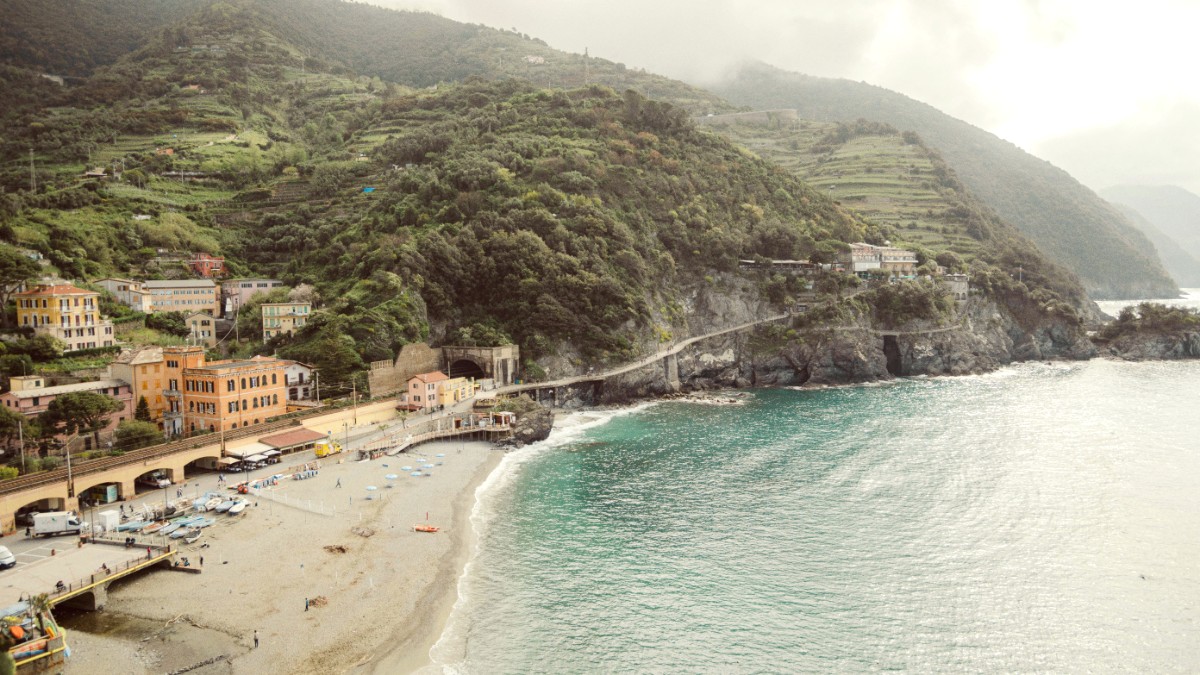
Italy
Each season presents a different experience.
Spring (April-May) and Autumn (September-October) offer mild temperatures and moderate rainfall. Summer (June-August) brings warm to hot temperatures and low precipitation. Winter (November-March) has cool temperatures and higher precipitation.
Each season offers distinct advantages and considerations.
High season (June-August): Crowds are substantial, leading to packed trains, busy beaches, and longer waits at restaurants. Accommodation prices peak. Hiking can be challenging due to heat and crowded trails.
April-May, September-October
Temperatures are pleasant for hiking and exploring. Fewer crowds than summer.
Most services stay open, and accommodation/activity prices are often lower. Beautiful scenery with spring blooms or autumn colors.
November-March
Very few tourists, offering an authentic local experience. Accommodation prices are lowest.
Many businesses may close. Ferry services are limited or suspended. Many hiking trails often close due to landslide risks.
Seasonal considerations
Most significant rain occurs in autumn and winter. Heavy rains trigger landslides, leading to temporary trail closures. Always check trail status.
Summer brings intense heatwaves. Winter and late autumn bring strong winds and rough seas, impacting ferry services.
Hiking: April, May, September, and early October have the most comfortable temperatures and generally open trails.
Swimming/Beach: June, July, August, and early September have the best water temperatures and sun for beach activities. Wine Tasting: September and October align with grape harvest season, offering unique opportunities to experience local viticulture.
Shoulder seasons work well for photography, with fewer crowds and softer light.
Winter offers the possibility of dramatic coastal storms for unique photography.
Spring brings lush green landscapes and wildflowers blooming along the trails.
Autumn provides beautiful colors in the vineyards and surrounding hills.
Summer captures the beach life and sparkling blue waters.
Italy uses the Euro, and prices fluctuate by travel style and season.
The official currency in Italy is the Euro (€). ATMs, known as "Bancomat," are widely available in Monterosso and larger towns. Banks also offer currency exchange. Independent currency exchange bureaus often have less favorable rates or higher fees.
These estimates present a general idea; actual costs may vary based on your specific choices and the season.
Detailed cost estimates for various aspects of your trip.
| Category | Item | Price Range |
|---|---|---|
| Accommodation | Hostel dorm | €30-€50 |
| Meals | Dinner (trattoria, no drinks) | €20-€40 |
| Transportation | 1-day CT Treno MS Card | €18.20 |
Italy is a safe country. Awareness of common concerns and local procedures remains useful.
No specific vaccinations are required for entry into Italy from most countries.
Ensure routine vaccinations are current (e.g., MMR, DTP, Polio). Hepatitis A and B are sometimes suggested for longer stays or rural visits. Consult your doctor.
Summer brings high sun exposure. Use High SPF sunscreen, wear hats, and stay hydrated. Avoid strenuous activities during peak sun hours.
Emergency Number: Dial 112 for police, ambulance, or fire services.
Monterosso has a pharmacy (Farmacia Monterosso) for minor ailments. For more serious medical issues, travel to a larger hospital in La Spezia (Ospedale Civile Sant'Andrea) or Levanto (Ospedale Sant'Andrea).
EU Citizens: Bring your EHIC (European Health Insurance Card) to access state-provided healthcare. Non-EU Citizens: Comprehensive travel insurance is highly suggested. It includes medical emergencies, emergency evacuation, and unexpected health issues.
Tap water is safe to drink throughout Italy, including Monterosso. Food hygiene standards remain high.
Monterosso and Cinque Terre are generally very safe destinations with low crime rates.
Pickpocketing can occur in crowded areas like train stations, popular hiking trails, or ferry docks, especially during peak season. Stay vigilant with your belongings.
Scams are rare, but be wary of individuals offering unsolicited "help" at train stations, especially with ticket machines, as they may try to overcharge you.
Natural disaster risks and seasonal hazards.
Tips for staying safe and enjoying your trip.
Drink plenty of water, especially when hiking in warm weather. Carry a reusable water bottle.
Use sunscreen and wear a hat during sunny days to prevent sunburn and heatstroke.
Use anti-theft bags or a money belt in crowded areas to guard against pickpocketing.